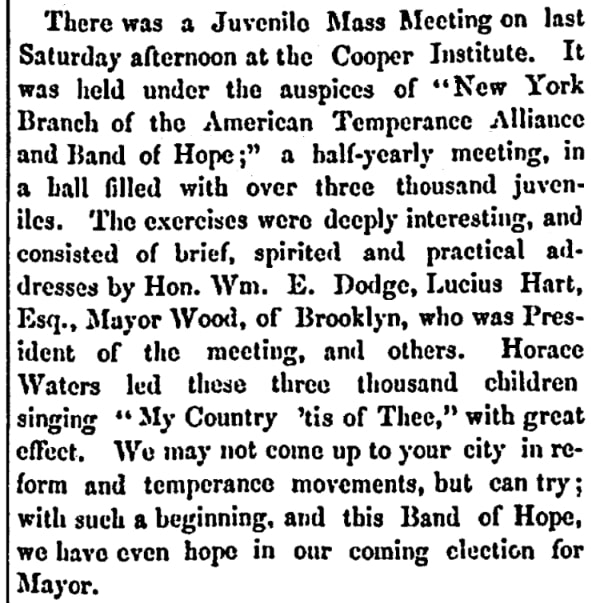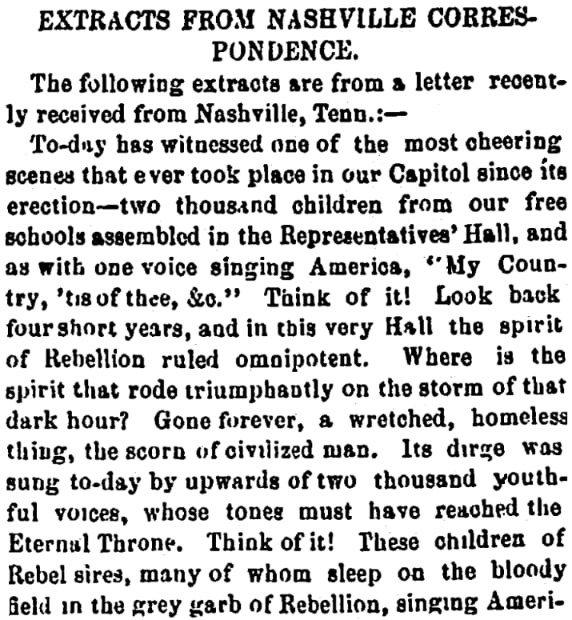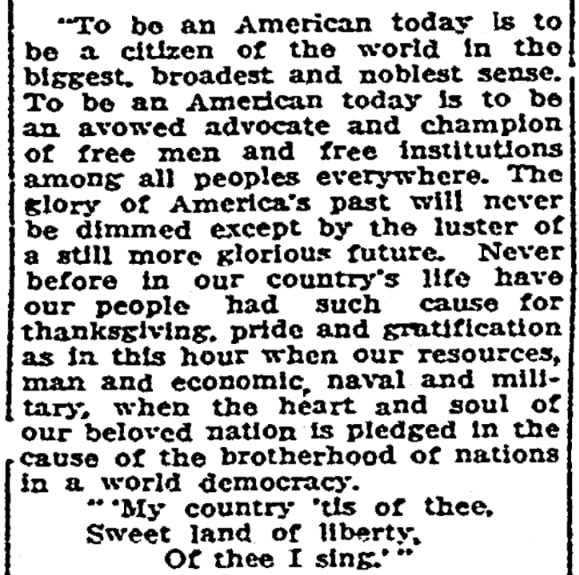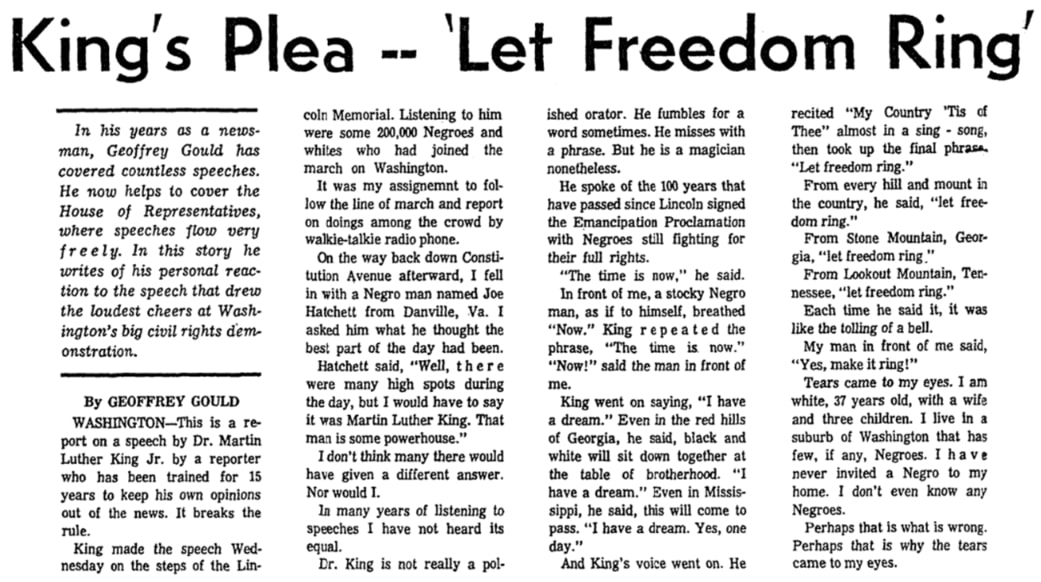Introduction: In this article – to celebrate the upcoming Fourth of July holiday – Jane Hampton Cook tells the story of America’s national hymn: “My Country, ’Tis of Thee.” Jane is a presidential historian and author of My Country ’Tis of Thee for children. Her works can be found at Janecook.com. She is also the host of Red, White, Blue and You
I recently used GenealogyBank.com to help write a new children’s book about the song “My Country, ’Tis of Thee” as part of a series called “Revolutionary Readers for America’s 250th Birthday.” GenealogyBank delivered a wealth of information about this favorite patriotic hymn.

Samuel F. Smith wrote the lyrics to “My Country, ’Tis of Thee” and arranged for children at Park Street Church in Boston to sing the song, which he initially called “America,” for the first time on 4 July 1831. Minister and author Edward Everett Hale had fond memories of witnessing that performance. Hale was the grand-nephew of American hero Nathan Hale, a spy who was captured and hung by the British military in 1776 during the American Revolution. At age 69, Edward Hale reflected on his childhood memory of witnessing the first performance of “America.”

This article reports:
Dr. Edward Everett Hale has said that, of all Fourths of July in Boston, that of 1833 [1831] left the deepest mark in the history of the century. He said he had spent his last cent and bought medals, drunk root beer, eaten oysters and other things, and was slowly returning home when at Park Street Church he saw a procession of children entering. They were Sunday school children. It was then and there that the hymn, My Country, ’Tis of Thee, was sung, the first time it had ever been sung in public. Happy fate that this hymn of the nation was consecrated on the national birthday!
By 1865, “My Country, ’Tis of Thee” had become such a popular hymn that Americans in both the North and the South turned to this song for healing after the Civil War.

This article reports that at a Juvenile Mass Meeting in New York:
Horace Waters [hymn publisher] led these three thousand children [in] singing “My Country, ’Tis of Thee” with great effect.
Thousands of children also gathered in Tennessee that year to sing this song.

This article reports from a recent letter received from a correspondent in Nashville:
“Today has witnessed one of the most cheering scenes that ever took place in our Capitol since its erection – two thousand children from our free schools assembled in the Representatives’ Hall, and as with one voice singing ‘America,’ ‘My Country, ’Tis of Thee’ &c. Think of it! Look back four short years, and in this very Hall the spirit of Rebellion ruled omnipotent. Where is the spirit that rode triumphantly on the storm of that dark hour? Gone forever, a wretched, homeless thing, the scorn of civilized man. Its dirge was sung today by upwards of two thousand youthful voices, whose tones must have reached the Eternal Throne.”
“My Country, ’Tis of Thee” became a song that immigrants turned to when they became U.S. citizens. At a new citizens ceremony in San Diego in 1917, one of the speakers quoted this song as he discussed America’s role in World War I.

This article reports the speaker’s words:
“Never before in our country’s life have our people had such cause for thanksgiving, pride and gratification as in this hour, when our resources, man and economic, naval and military, when the heart and soul of our beloved nation is pledged in the cause of the brotherhood of nations in a world democracy.
‘My country, ’tis of thee,
Sweet land of liberty,
Of thee I sing,’”
“My Country, ’Tis of Thee” was also sung to bring attention to civil rights for black Americans in New York, such as Broadway singer Canada Lee’s appearance at a civil rights rally in 1945.

This gossip column reports:
Canada Lee hit the high spot of his dramatic career with his closing interpretation of “My Country, ’Tis of Thee,” etc., at the Negro Freedom Rally Monday night.
Less than two decades later in 1963, Martin Luther King Jr. gave his most famous speech, “I Have a Dream,” in Washington, D.C. His use of the phrase “Let Freedom Ring” from “My Country, ’Tis of Thee” was powerful. The Oakland Tribune ran the headline “King’s Plea – ‘Let Freedom Ring.’”

This article gives the reporter’s first-person account of hearing Martin Luther King Jr.’s speech that day:
“King went on saying, ‘I have a dream.’ Even in the red hills of Georgia, he said, black and white will sit down together at the table of brotherhood. ‘I have a dream.’ Even in Mississippi, he said, this will come to pass. ‘I have a dream. Yes, one day.’
“And King’s voice went on. He recited ‘My Country, ’Tis of Thee’ almost in a sing-song, then took up the final phrase, ‘Let Freedom Ring.’
“From every hill and mount in the country, he said, ‘let freedom ring.’
“From Stone Mountain, Georgia, ‘let freedom ring.’
“From Lookout Mountain, Tennessee, ‘let freedom ring.’
“Each time he said it, it was like the tolling of a bell.”
With all this history, it’s no wonder that “My Country, ’Tis of Thee” was a favorite song for America’s 200th birthday in 1976. Because July 4 fell on a Sunday that year, churches throughout the nation celebrated America’s Bicentennial with music, including “My Country, ’Tis of Thee.”
The leaders of Park Street Church also held a special service on July 4, 1976. They reenacted the first time the song was sung there in 1831.

This article reports:
The original singing of “America” at Park Street Church on Boston Common by a group of children on Independence Day, 1831, will be reenacted by the church’s Junior Choir, attired in colonial costume and directed by Sonja Pryor, in an outdoor Bicentennial ceremony on the steps of the church at 10 a.m. Sunday.
The article noted that the famous organist, Lowell Mason, had directed the first rendition in 1831. Mason was known as the father of church music in America. Samuel Francis Smith, a Harvard College graduate, wrote the song’s five verses.
Time and again, GenealogyBank.com has proven to be an indispensable research tool. The ability to search by keyword with phrases such as “My Country, ’Tis of Thee” enables us to better understand our nation’s past. In this case, we can see that Americans frequently turned to “My Country, ’Tis of Thee” as a way to express their love of country under a variety of circumstances, from its childlike beginning to the nation’s Bicentennial and from the Civil War to the civil rights movement in the 1960s.
Have fun celebrating the Fourth of July with family and friends!
Explore over 330 years of newspapers and historical records in GenealogyBank. Discover your family story! Start a 7-Day Free Trial
Note on the header image: Fourth of July fireworks over the East Village of New York City. Credit: David Shankbone; Wikimedia Commons.
